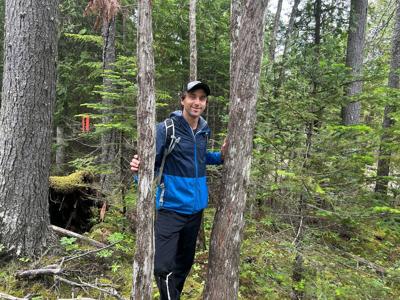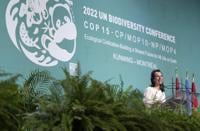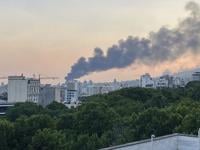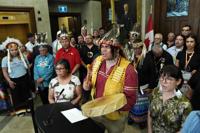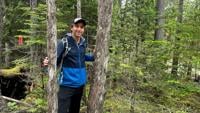LORNEVILLE - A spruce tree in Saint John, N.B., likely dating back to around the time of famed French explorer Samuel de Champlain, is part of a forested area at risk of being paved over to make room for a new kind of habitat: an industrial park expansion west of the port city.
Saint John city council recently approved the plans for the Spruce Lake Industrial Park, described on the business hub's website as a "diverse ecosystem" of companies. Scientists, meanwhile, say the red spruce — likely about 400 years old — is among the oldest trees in the province, and the old-growth forest in which it stands is a piece of history the city should protect from the axe.
"When Samuel de Champlain sailed up the Bay of Fundy and into what is now the Saint John Harbour back in the early 1600s — that was around the same time this tree started growing," said Chris Watson, a research scientist at University of New Brunswick's physics department. It was Watson, a resident of Lorneville, the small coastal community of 800 people where the industrial park is to be expanded, who collected a wood sample from the tree to determine its age.
Last week the City of Saint John voted 10-0 to expand the industrial park. Mayor Donna Reardon told the meeting that while council had heard residents' concerns, it needed to cater to the "fastest-growing port in North America."
"Growth isn't easy," she said. "It's always difficult — it's because we're not used to it in Saint John. So we've got to move forward."
An environmental impact assessment by a consulting company told the city the expansion site was of "relatively low value, economically and ecologically." Dillon Consulting did not return a request for comment.
Ben Phillips, a scientist at Mount Allison University's Acadian forest dendrochronology lab, disagrees with Dillon's assessment that the area is of low ecological value. In a letter to Saint John city council, he said the forest "contains old-growth trees that rival the oldest in New Brunswick."
"At a minimum of 388 years old, the oldest red spruce from the proposed Spruce Lake industrial area is now confirmed among a small group of the oldest spruce trees in New Brunswick," he wrote.Â
"This tree likely sprouted up as a sapling in 1625 and took 10 to 20 years to grow to the height where the increment core sample was extracted. That makes this tree approximately 400 years of actual age. Possibly only three to four previously sampled trees from New Brunswick may exceed this age. ... Many of these trees were growing on this site when settlers arrived and began forestry operations in the late 1700s."
A nearly 15-metre-wide area has been cleared in the wooded site for a new road — construction that Phillips said could have resulted in the cutting down of several very old trees. Other trees measured in the same area, he noted, "were also of exceptional age."
"It is surprising that this forest has survived the axe and then the chainsaw."
No projects have so far been announced for the new site. The final authority of environmental impact assessments rests with the province, Reardon said in an email. Neither the Environment Department nor the regional development authority returned requests for comment.
At the forest in Lorneville, Watson rested his hand on the nearly 400-year-old red spruce and looked up. The tree's crown is twisted, knotted and gnarly, its branches draped with light-green lichen. "That's called the old man's beard," he said with a laugh.Â
"It's magical. It's spectacular. It's so unique," Watson said, looking around at the forest floor covered with moss, lichens, various grasses and nearly metre-long ferns. "And just the knowledge that some of these areas have been untouched for hundreds of years — it's amazing to be able to walk in these woods."
The industrial park expansion should not go ahead, he said, adding that he's not against economic growth — he thinks there are other areas that can be developed without destroying a unique ecosystem.
"Leave it alone .... It's very rare to see, especially on Crown land, forests that are even just 100 years old. So, yeah. It should be absolutely left alone."Â
This report by şĂÉ«tvwas first published June 24, 2025.

